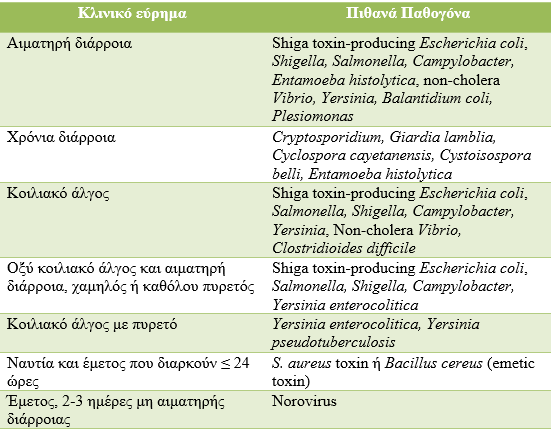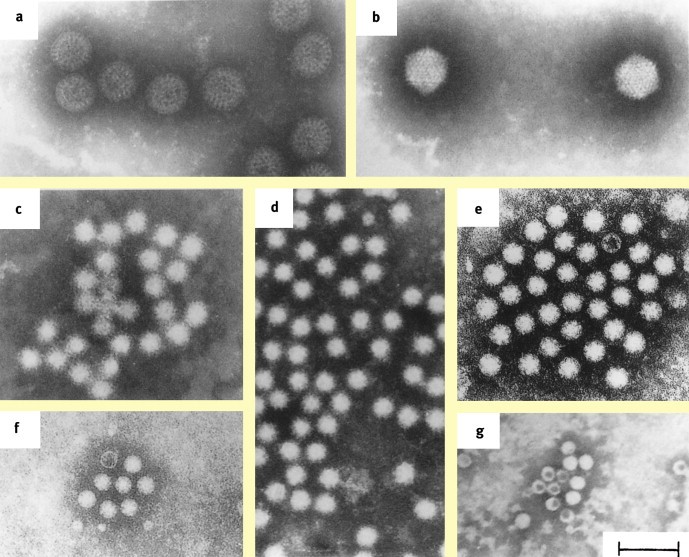Acute gastroenteritis is a disease characterized by infection of the gastrointestinal tract, which is responsible for significant mortality rates in developing countries and considerable economic burden in developed countries (Chow, 2010). The causative agent may be a virus, bacterium, or parasite.
Viruses account for approximately 70% of acute gastroenteritis cases in children (Chow, 2010), and around 20 different types of viruses have been identified as causative agents. Among these, rotaviruses are the most prevalent, responsible for 30% to 72% of hospitalizations due to acute gastroenteritis and 4% to 24% of all acute gastroenteritis cases worldwide (Chow, 2010). Other viruses that cause viral gastroenteritis include astroviruses (1–5%), subgroup F adenoviruses (1–10%), and caliciviruses (11–68%). The caliciviruses include noroviruses and sapoviruses (Desselberger, 2017).
The main symptoms of viral gastroenteritis are diarrhea and vomiting, lasting from 1 to 10 days. Other symptoms that may occur include nausea, abdominal pain, headache, muscle aches, fatigue, chills, and fever (Desselberger, 2017). Some viruses that more rarely cause diarrhea and vomiting, or asymptomatic infections, include Kobuviruses, enteroviruses, orthoreoviruses, adenoviruses (other than subgroup F), toroviruses, coronaviruses (including SARS-CoV), and parvoviruses.
Additionally, the human immunodeficiency virus (HIV), cytomegalovirus (CMV), herpes simplex virus (HSV), and adenovirus types 42 and 47 are associated with diarrhea in immunocompromised individuals (Desselberger, 2017).
The diagnosis of infections caused by rotaviruses, astroviruses, and adenoviruses is relatively easy due to the large number of viral particles shed during the acute phase of the disease. In contrast, noroviruses and sapoviruses replicate at lower concentrations and for a shorter duration. Treatment involves oral rehydration solutions or intravenous hydration in more severe cases (Desselberger, 2017).
Table 1. Clinical findings associated with pathogens causing diarrhea

Source : Kim YJ, Park KH, Park DA, Park J, Bang BW, Lee SS, Lee EJ, Lee HJ, Hong SK, Kim YR. Guideline for the Antibiotic Use in Acute Gastroenteritis. Infect Chemother. 2019 Jun;51(2):217-243. doi: 10.3947/ic.2019.51.2.217. PMID: 31271003; PMCID: PMC6609748
According to the Hellenic National Public Health Organization, in order to reduce the likelihood of contracting viral gastroenteritis, basic hygiene practices should be followed, such as frequent and thorough handwashing with soap and water, consuming safe food and water, thoroughly washing food before consumption or cooking, and properly cooking shellfish before eating. Additionally, a vaccine against rotavirus is available for infants and young children.
Bacteria are responsible for 10% to 20% of all acute gastroenteritis cases (Chow, 2010). In developed countries, bacterial gastroenteritis is mainly caused by bacteria such as Salmonella spp., Shigella spp., Campylobacter spp. (especially Campylobacter jejuni), Escherichia coli, Vibrio spp., Yersinia enterocolitica, and Listeria monocytogenes (Sattar, 2020). The main symptoms of bacterial gastroenteritis include nausea, diarrhea, vomiting, abdominal pain, and fever. Identifying the etiology of bacterial gastroenteritis is necessary only in cases where the patient’s health condition is considered severe. Treatment of bacterial gastroenteritis involves oral rehydration or, if that is not possible, intravenous hydration. The use of antibiotics is not necessary for all cases of bacterial gastroenteritis, even if the causative agent is known (Sattar, 2020).
According to EODY, in order to reduce the likelihood of contracting bacterial gastroenteritis, basic hygiene practices should be followed, such as frequent and thorough handwashing with soap and water. Foods containing animal products should be properly cooked before consumption. Raw fruits and vegetables should be thoroughly washed with running water, and food preparation should occur on clean surfaces. Dairy products should only be sourced from regulated suppliers. Shellfish should be cooked before consumption. Additionally, pets should not be allowed near food preparation areas, and in households with children under the age of five, pregnant women, or immunocompromised individuals, reptiles should not be kept as pets. Travelers to countries with poor hygiene conditions should avoid consuming ice cubes and unwashed fruits. In the event of illness, individuals should maintain personal hygiene measures and wash their hands frequently and thoroughly to reduce the risk of spreading the infection.
Infections by the organism Giardia lamblia are responsible for most cases of parasitic gastroenteritis, which can also be caused by parasites of the genus Cryptosporidium and Entamoeba histolytica (Chow, 2010).
Figure 1. Electron microscope photographs of a) rotavirus b) enteric adenovirus c) Norwalk virus d) calicivirus e) astrovirus f) enterovirus g) parvovirus (bar 100 nm).

(Source: Zuckerman A., Banatvala J., Pattison J, eds. Principles and practice of clinical virology. 4th edn. Chichester: Wiley, 2000 © John Wiley & Sons Limited)
Αναφορές
Chow CM, Leung AK, Hon KL. Acute gastroenteritis: from guidelines to real life. Clin Exp Gastroenterol. 2010;3:97-112. doi: 10.2147/ceg.s6554. Epub 2010 Jul 15. PMID: 21694853; PMCID: PMC3108653.
Desselberger U. Viral gastroenteritis. Medicine (Abingdon). 2017 Nov;45(11):690-694. doi: 10.1016/j.mpmed.2017.08.005. Epub 2017 Oct 10. PMID: 32288581; PMCID: PMC7108362.
Sattar SBA, Singh S. Bacterial Gastroenteritis. 2020 Aug 11. In: StatPearls [Internet]. Treasure Island (FL): StatPearls Publishing; 2021 Jan–. PMID: 30020667.
